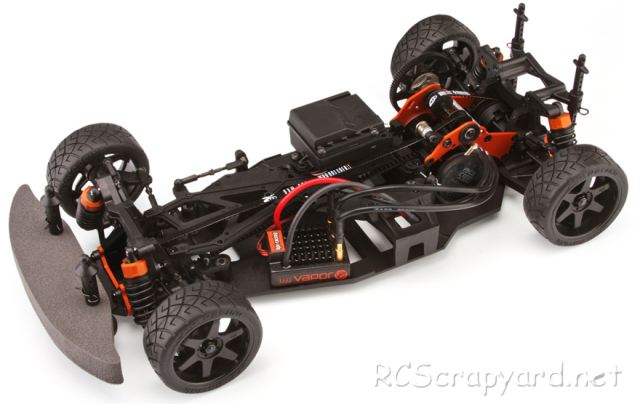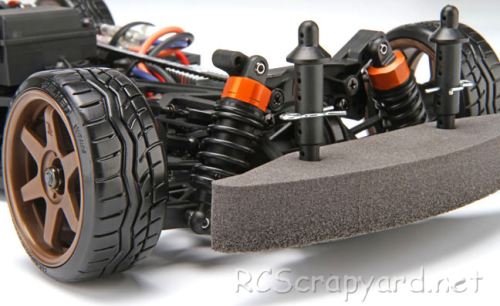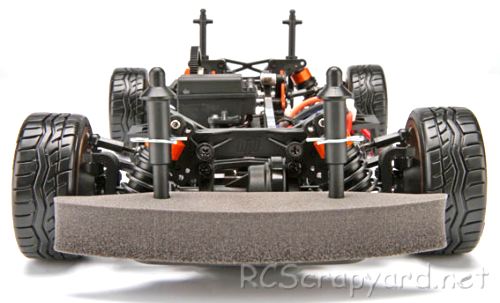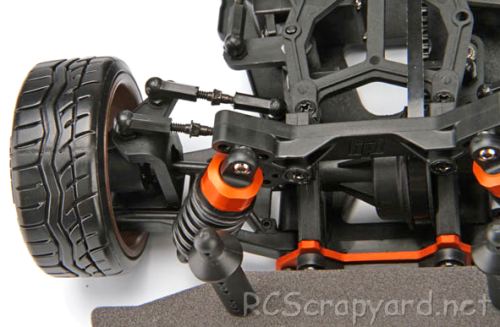

|


|
|
1/10 Scale Electric Rally/Touring Car:
HPI Sprint 2 Flux - Ford Mustang GT-R - # 106159 (Radio Controlled Model Review)History and Info:
Introduced by HPI (Hobby Products International) in 2011, the Ford Mustang GT-R - # 106159 - based on the Sprint 2 chassis, came factory assembled with a pre-painted lexan polycarbonate Bodyshell, a Flux VEKTOR Brushless 5900Kv Motor, Waterproof Flux Vapour ESC, 8.4V Battery, Charger and 2.4Ghz radio system. A number of other bodyshell options were available (Check out our HPI Archive).
▼ Scroll Down for More Images ▼
|








|
|
|

★ HPI Sprint 2 Flux - Ford Mustang GT-R - # 106159 Chassis ★

★ HPI Sprint 2 Flux - Ford Mustang GT-R - # 106159 Chassis ★

★ HPI Sprint 2 Flux - Ford Mustang GT-R - # 106159 Chassis ★

★ HPI Sprint 2 Flux - Ford Mustang GT-R - # 106159 Chassis ★

|
Buying a Used HPI Sprint 2 Flux
|
|
Manufacturers and Brands Catalogued and Listed by RC-Scrapyard.
At present, the RC Model Manufacturers, Brands and Distributors covered by us are: ABC Hobby, Academy, Acme Racing, Agama Racing, Amewi, Ansmann Racing, ARRMA, Team Associated, Atomic RC, Axial, AYK, Bolink, BSD Racing, Capricorn, Carisma, Carson, Caster Racing, Cen, Corally, Custom Works, Durango, Duratrax, ECX - Electrix, Exceed RC, FG Modellsport, FS-Racing, FTX, Fujimi, Gmade, GS-Racing, Harm, HBX, Helion, Heng Long, Himoto Racing, Hirobo, Hitari, Hobao, Hong-Nor, Hot Bodies, HPI, HSP, Intech, Integy, Jamara, JQ Products, Kawada, Kyosho, Losi, LRP, Maisto, Mardave, Marui, Maverick, MCD Racing, Megatech, Mugen, New Bright, Nichimo, Nikko, Nkok, Ofna, Pro-Pulse, Protech, PTI, RC4WD, Redcat Racing, RJ-Speed, Robitronic, Schumacher, Seben, Serpent, Smartech, Sportwerks, Step-Up, Tamiya, Team-C Racing, Team Magic, Thunder Tiger, Tomy, Top Racing, Traxxas, Trinity, Tyco, Vaterra RC, Venom, VRX Racing, WLToys, X-Factory, Xmods, Xpress, Xray, XTM, Yankee RC, Yokomo, ZD Racing and Zipzaps. |
|
Hints, Tips and Information Gear Differentials
The Gear Differentials, commonly used in Buggys, Trucks, Touring Cars, Monster Trucks and some of the early Tamiya Formula One and Le-Mans cars, are by design more robust than the high maintenance Ball Differentials.
|
|
Hints, Tips and Information
Sway Bars
On most forms of RC model cars, Sway Bars, also referred to as Stabilizers, Torsion Bars, or more commonly in some parts as Anti Roll Bars, are often nothing more than a short length of spring steel, clamped to the chassis or sometimes the gearbox of the car, extending out to the lower wishbones direct or connected to the wishbones using short adjustable or fixed length links and ball joints, depending on their position. |
|
RC Models:
|
Radio & Motors: |
Other
Accessories: |